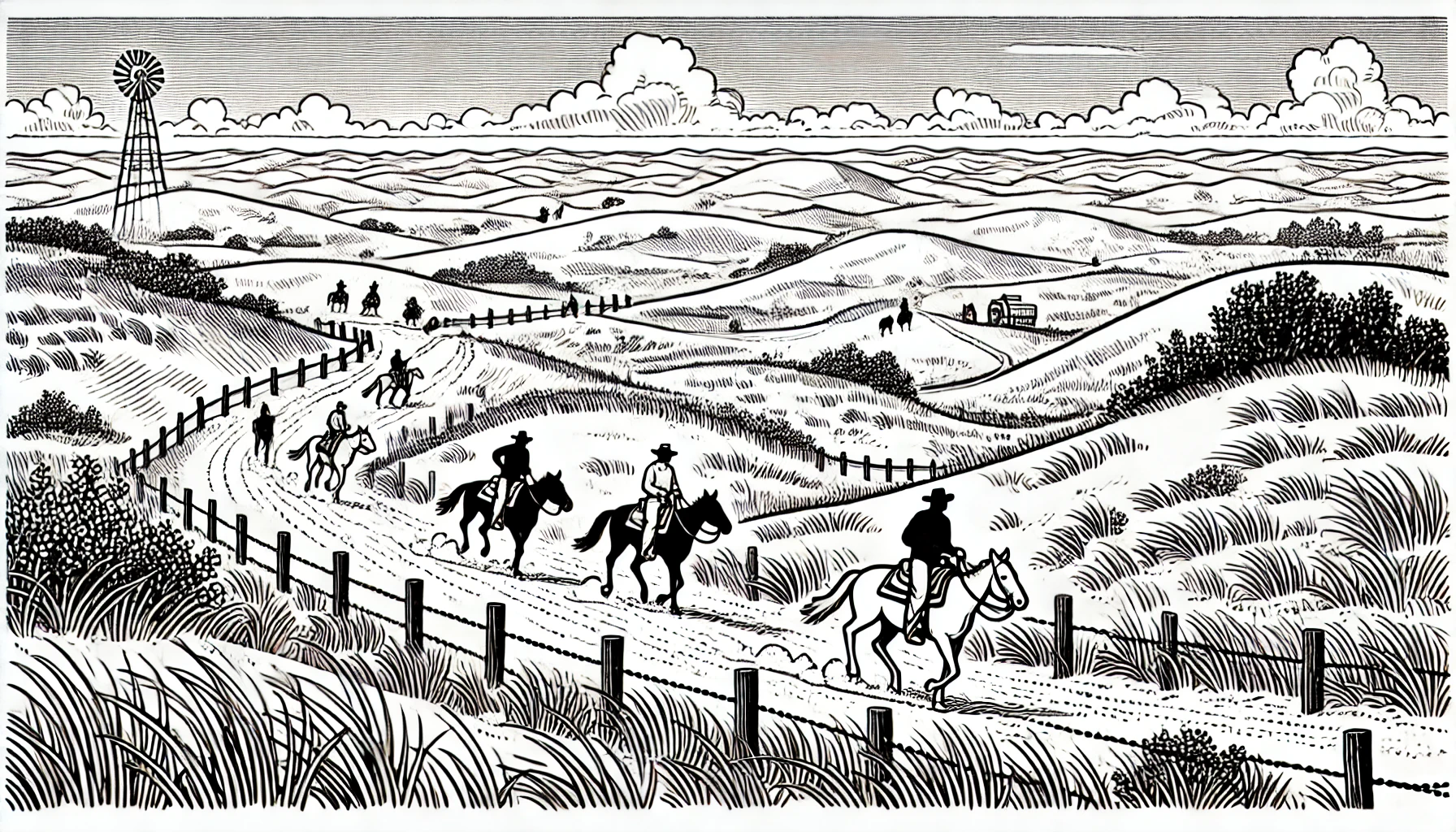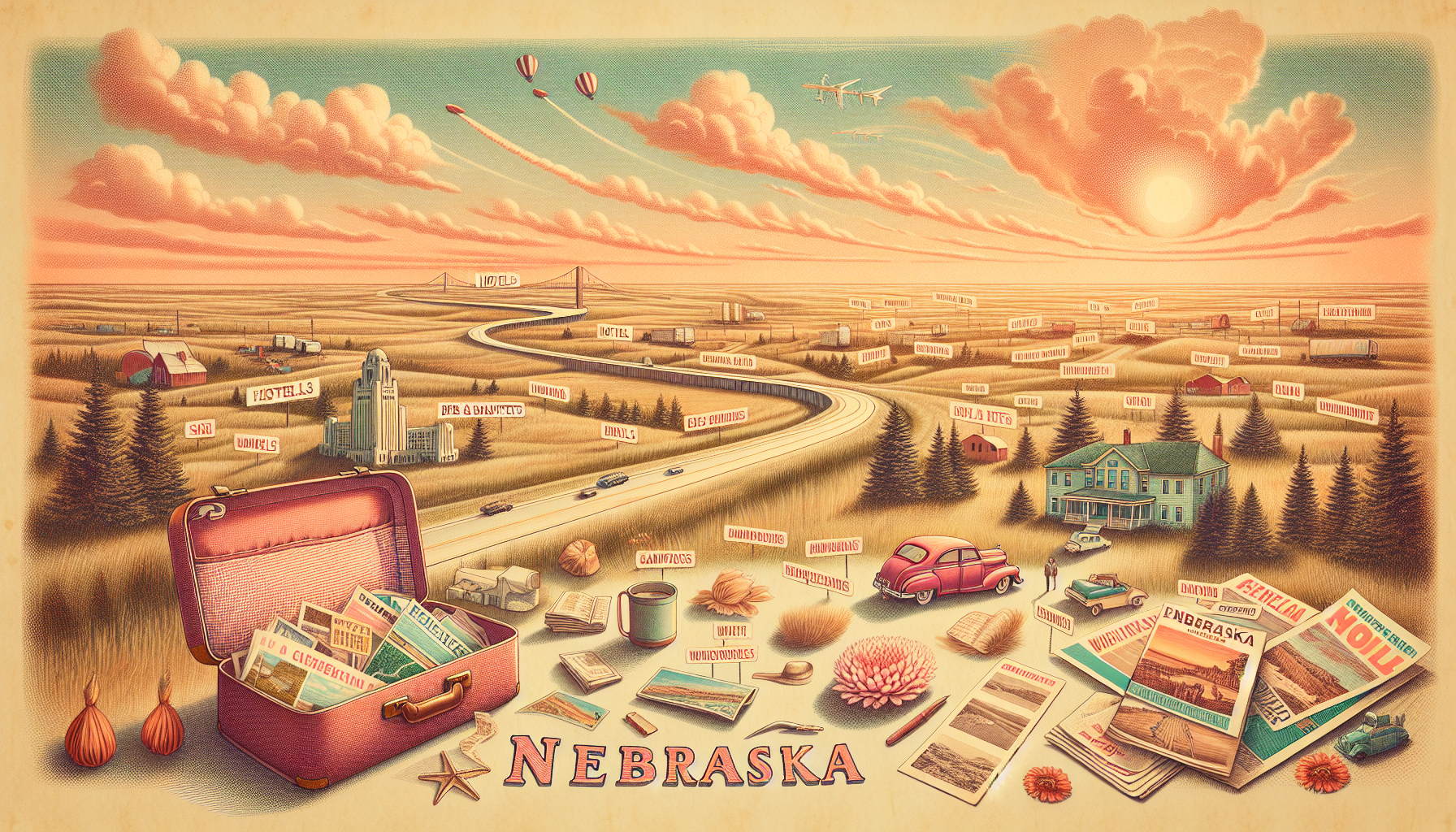Traveling Through Nebraska's Great Plains Glaciation

Traveling through Nebraska offers a diverse array of natural landscapes and geological formations. One of the most fascinating aspects of the state's natural history is the Great Plains glaciation that occurred during the Pleistocene epoch. The Great Plains glaciation, which began approximately 2 million years ago and ended around 12,000 years ago, had a profound impact on the region's geology and ecosystems.
During this period, massive ice sheets advanced and retreated across the Great Plains region, shaping the landscape and creating unique landforms. The ice sheets scoured the underlying bedrock, leaving behind a legacy of glacial deposits and landforms that are still visible today. In Nebraska, evidence of the Great Plains glaciation can be seen in the numerous glacial lakes, moraines, and other deposits that dot the landscape. For example, the Elkhorn River valley in northeastern Nebraska was carved out by the movement of glacial ice during the Pleistocene epoch, creating a unique and diverse ecosystem that is home to a variety of plant and animal species.
One of the most notable features of the Great Plains glaciation in Nebraska is the formation of glacial lakes. These lakes, such as Lake McConaughy and Lake Ogallala, were formed when blocks of ice broke off from the retreating ice sheets and melted, creating depressions that eventually filled with water. These lakes provide critical habitat for a variety of aquatic species and are an important part of the state's ecosystem. The Lake McConaughy State Recreation Area, located in western Nebraska near the Lake McConaughy lake, is a popular destination for outdoor enthusiasts who come to enjoy the lake's recreational opportunities and witness the state's glacial history firsthand.
In addition to glacial lakes, the Great Plains glaciation also left behind numerous moraines, which are ridges of glacial debris that were deposited as the ice sheets retreated. These moraines can be seen throughout Nebraska, particularly in the northeastern part of the state, where the Nemaha Divide, a prominent moraine that stretches across the state, is located. The Nemaha Divide, which forms the divide between the Missouri and Mississippi river basins, is a key geological feature of the state and provides a glimpse into the region's glacial past.
The Great Plains glaciation also had a significant impact on the region's soil and vegetation. The glacial deposits that cover much of the state's landscape are rich in nutrients, making them ideal for agriculture and supporting a diverse array of plant species. In fact, the fertile soils of the Great Plains region are one of the reasons that Nebraska is often referred to as the "bread basket" of the United States. The state's unique combination of glacial soil and climate has also supported the development of unique and diverse ecosystems, such as the Sandhills and the Loess Hills.
In conclusion, the Great Plains glaciation that occurred during the Pleistocene epoch had a profound impact on the geology and ecosystems of Nebraska. The state's numerous glacial lakes, moraines, and other deposits are a testament to the region's glacial past and provide a unique glimpse into the state's natural history. By exploring these features, travelers can gain a deeper understanding of the state's geology and ecosystems and develop a greater appreciation for the natural beauty of Nebraska.
The Great Plains glaciation is an important aspect of the region's natural history, and it continues to shape the state's landscape and ecosystems today. Understanding this geological event is crucial for appreciating the diversity and complexity of Nebraska's natural world. By exploring the state's glacial features and learning about its glacial past, travelers can gain a deeper appreciation for the natural beauty and diversity of Nebraska.
During this period, massive ice sheets advanced and retreated across the Great Plains region, shaping the landscape and creating unique landforms. The ice sheets scoured the underlying bedrock, leaving behind a legacy of glacial deposits and landforms that are still visible today. In Nebraska, evidence of the Great Plains glaciation can be seen in the numerous glacial lakes, moraines, and other deposits that dot the landscape. For example, the Elkhorn River valley in northeastern Nebraska was carved out by the movement of glacial ice during the Pleistocene epoch, creating a unique and diverse ecosystem that is home to a variety of plant and animal species.
One of the most notable features of the Great Plains glaciation in Nebraska is the formation of glacial lakes. These lakes, such as Lake McConaughy and Lake Ogallala, were formed when blocks of ice broke off from the retreating ice sheets and melted, creating depressions that eventually filled with water. These lakes provide critical habitat for a variety of aquatic species and are an important part of the state's ecosystem. The Lake McConaughy State Recreation Area, located in western Nebraska near the Lake McConaughy lake, is a popular destination for outdoor enthusiasts who come to enjoy the lake's recreational opportunities and witness the state's glacial history firsthand.
In addition to glacial lakes, the Great Plains glaciation also left behind numerous moraines, which are ridges of glacial debris that were deposited as the ice sheets retreated. These moraines can be seen throughout Nebraska, particularly in the northeastern part of the state, where the Nemaha Divide, a prominent moraine that stretches across the state, is located. The Nemaha Divide, which forms the divide between the Missouri and Mississippi river basins, is a key geological feature of the state and provides a glimpse into the region's glacial past.
The Great Plains glaciation also had a significant impact on the region's soil and vegetation. The glacial deposits that cover much of the state's landscape are rich in nutrients, making them ideal for agriculture and supporting a diverse array of plant species. In fact, the fertile soils of the Great Plains region are one of the reasons that Nebraska is often referred to as the "bread basket" of the United States. The state's unique combination of glacial soil and climate has also supported the development of unique and diverse ecosystems, such as the Sandhills and the Loess Hills.
In conclusion, the Great Plains glaciation that occurred during the Pleistocene epoch had a profound impact on the geology and ecosystems of Nebraska. The state's numerous glacial lakes, moraines, and other deposits are a testament to the region's glacial past and provide a unique glimpse into the state's natural history. By exploring these features, travelers can gain a deeper understanding of the state's geology and ecosystems and develop a greater appreciation for the natural beauty of Nebraska.
The Great Plains glaciation is an important aspect of the region's natural history, and it continues to shape the state's landscape and ecosystems today. Understanding this geological event is crucial for appreciating the diversity and complexity of Nebraska's natural world. By exploring the state's glacial features and learning about its glacial past, travelers can gain a deeper appreciation for the natural beauty and diversity of Nebraska.
